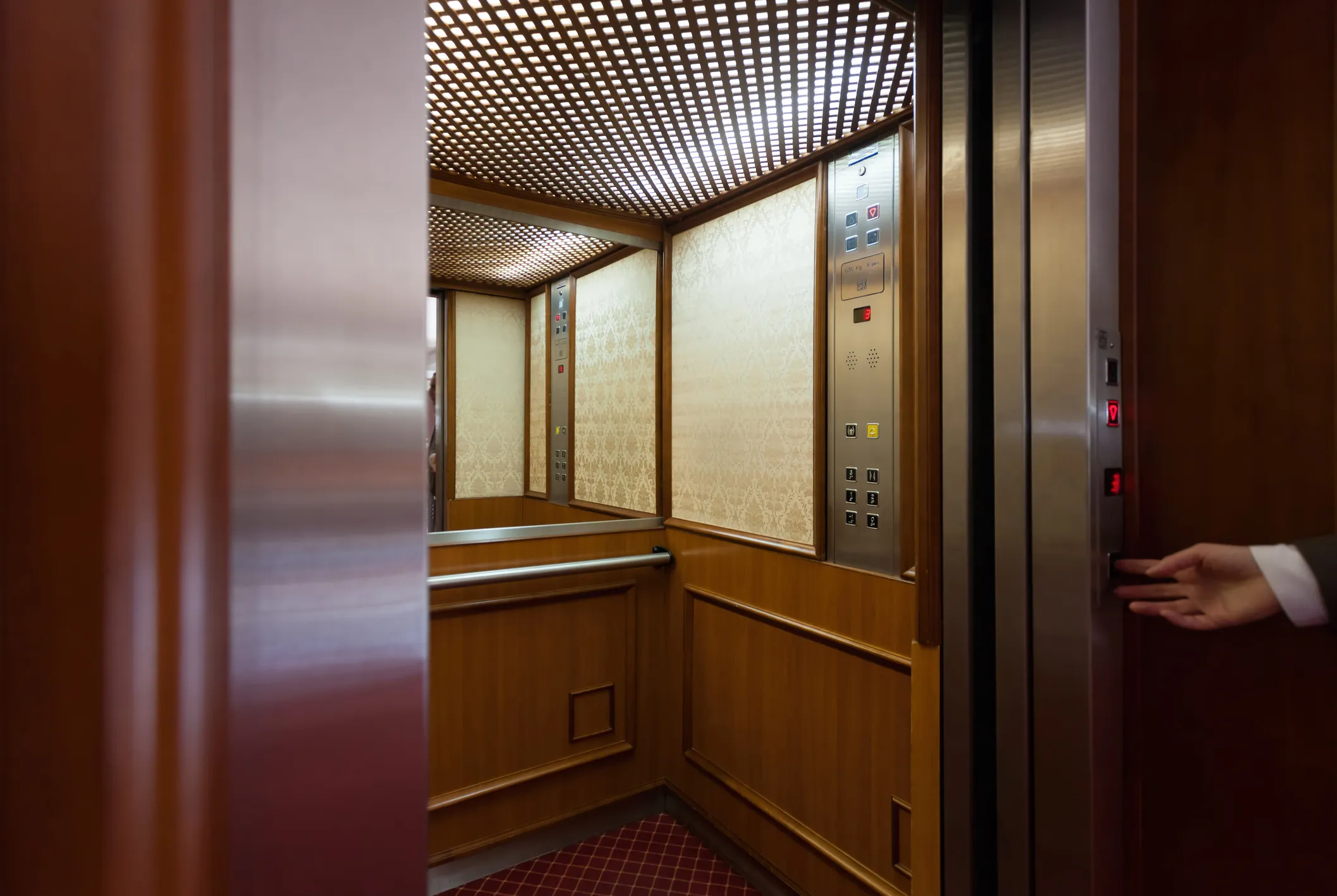Most people are unaware of the risk of severe injury posed by elevators. Elevator accidents occur more frequently and involve more serious injuries than expected.
Lytal, Reiter, Smith, Ivey & Fronrath has helped wrongfully injured persons obtain compensation for nearly four decades. Our West Palm Beach elevator and escalator accident attorneys have successfully managed cases for hundreds of clients throughout Florida and the United States.

How common are elevator accidents?
Millions of elevators across the country serve businesses and residential buildings. There are nearly 900,000 elevators currently operating in the United States that can make upwards of 18 billion trips a year.
Despite advancements in mechanics and safety protocols, elevators cause thousands of injuries per year. The above report estimates:
- An average of 27 deaths per year are attributed to elevator accidents
- More than 10,200 people are injured yearly in elevator accidents
More than half of all fatalities are due to falling down the shaft of the elevator. In addition, 17% of elevator accident deaths result from laborers working or servicing the car. Roughly 30% of fatalities happen during the elevator’s performance.
Fatal elevator incidents are rare. However, there are several potential causes of an elevator accident in Florida. The majority of which can be prevented.
What can go wrong with an elevator?
Most elevators are lifted and lowered by a motorized system of cables and pulleys. Like any mechanical device, elevators require regular maintenance and periodic inspections to remain in good working condition and avoid malfunctions.
Misleveling
Roughly 25% of all elevator incidents involve misleveling, which occurs when an elevator car stops above or below the level of the floor being accessed. An elevator may mislevel due to issues with braking, excess weight in the elevator, or electrical issues. Passengers may be injured trying to enter or exit the elevator due to the uneven floors.
Sliding door malfunction
Elevator doors are opened and closed with electronic sensors. Over time these sensors may become worn, causing the doors not to operate properly. When the elevator doors aren’t sensing properly, they can close too quickly and cause crushing injuries to body parts that get caught between the doors. Sensing issues can also cause elevator doors not to open at all, potentially trapping passengers inside the car.
Excessive speed
Most passenger elevators move at speeds between 5 and 22 mph. Starting and stopping must be smooth so that standing passengers are not knocked into one another or to the ground by rapid or jerky motions.
When an elevator goes too fast, stops may become very abrupt and cause passengers to be thrown about inside the car. Excessive speed can indicate a malfunction of the control systems or counterweight.
Persons at risk for an elevator accident
Any passenger on an elevator can be injured if a malfunction occurs but some of the most serious injuries occur to children from residential elevators and to persons who work on and around elevators.
Children
The Consumer Product Safety Commission (CPSC) has recalled over 100,000 residential elevators in the last few years. Children have been seriously injured or killed when they get trapped in a small gap between the exterior landing door and the interior elevator car door, and the elevator is called to another floor.
Gaps of more than 4 inches are considered dangerous for young children. Gaps can be made safer by placing space guards on the back of the exterior landing door or installing an electronic monitoring device that will deactivate the elevator if a child is detected in the gap.
Elevator maintenance workers
According to an OSHA report, from January 2020 to September 2023 41 workers were killed and 21 were injured while repairing or working on elevators.
The number one cause of death is falling while installing or repairing an elevator, followed by getting caught between elevators and elevator shafts or other elevators and being struck by objects – usually elevators descending into a shaft where someone is working.
About 40% of the fatal accidents involve workers who are not working on elevators but may be working near improperly guarded elevator shafts.
Who to contact if you are injured in an elevator accident in Florida
When an elevator accident occurs, there are several parties potentially responsible. The building owner or manager may not have maintained adequate safety for those using or working around the elevator. A company that installed, serviced, or repaired the elevator may have failed to complete the job correctly. Or a defect may have occurred while the elevator was being manufactured.
The accident must be investigated to determine what went wrong and whose responsibility it was to prevent the injury. To find out if you can recover compensation after an elevator accident, schedule a free consultation with a skilled attorney from the office of Lytal, Reiter, Smith, Ivey & Fronrath.




